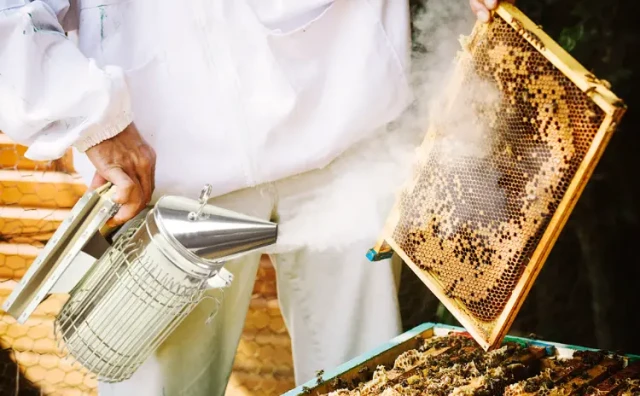Beekeeping smokers are essential tools for managing hive inspections safely and efficiently. When used correctly, smoke calms bees by masking alarm pheromones, allowing beekeepers to work without triggering defensive behaviors. This guide combines practical techniques with combustion science to help you operate and maintain your smoker like a professional.
Beekeeping Smoker Essentials for Hive Management
Anatomy of a Smoker: Core Components Explained
A standard smoker consists of:
- Fire chamber: Where fuel burns (typically stainless steel for heat resistance)
- Bellows: Generates airflow to sustain combustion
- Lid/Spout: Directs smoke flow while restricting oxygen to prevent flames
Understanding these parts ensures proper assembly and troubleshooting.
Fuel Selection and Combustion Science
Ideal fuels share three traits:
- Slow burn rate (e.g., pine needles, wood pellets)
- Low resin content to minimize harmful fumes
- High smoke output per volume
Why it matters: Fast-burning materials like paper create intense heat but require frequent refills, while dense fuels (e.g., burlap) produce cooler, longer-lasting smoke.
Step-by-Step Safe Ignition and Operation
- Prep the fire chamber: Loosely fill 1/3 with starter material (dryer lint, cotton).
- Ignite carefully: Use a lighter or matches, then add primary fuel (e.g., pine shavings).
- Control airflow: Close the lid partially to smolder—not flare—pumping bellows every few minutes.
- Apply smoke: Gently puff near hive entrances before opening to preempt bee agitation.
Pro Tip: Angle the spout downward to prevent hot embers from falling onto bees.
Advanced Smoker Maintenance and Troubleshooting
Cleaning Techniques for Longevity
Residue buildup reduces efficiency. After cooling:
- Tap out ash and scrub the chamber with a wire brush
- Soak stubborn tar deposits in vinegar overnight
- Rinse and dry thoroughly to prevent rust
Fixing Common Issues
- Clogged spout: Clear with a pipe cleaner or compressed air.
- Weak smoke: Check for fuel compaction or wet materials.
- Bellows failure: Inspect leather gaskets for cracks and replace if stiff.
Seasonal Storage Best Practices
- Empty completely to deter pests.
- Oil metal parts with food-grade mineral oil.
- Store upside-down in a dry place to moisture damage.
Ready to upgrade your beekeeping toolkit? HONESTBEE’s wholesale-focused supplies give commercial apiaries and distributors access to durable smokers backed by industry expertise—because calm hives start with reliable equipment.
Remember: Consistent smoker maintenance isn’t just about tool care; it’s about fostering harmonious hive interactions that protect both bees and beekeepers.
Visual Guide

Related Products
- Premium Traditional Copper Bee Smoker with Bellows
- Stainless Steel Honey Bee Smoker Hive and Honeycomb Smoker for Beekeeping
- European Stainless Steel Bee Smoker for Honey Bee Hive
- Economy Galvanized Beekeeping Honey Bee Smoker for Wholesale
- Electric Bee Smoker European Style Bee Hive Smoker for Beekeeping
Related Articles
- Mastering the Use of Beekeeping Smokers
- How to Use Smoke for Hive Management: Science-Backed Techniques for Beekeepers
- How to Use a Bee Smoker Effectively: Protecting Colonies and Beekeepers
- How to Optimize Your Bee Smoker for Safer, More Efficient Beekeeping
- How to Maintain Your Bee Smoker for Optimal Performance and Safety




















